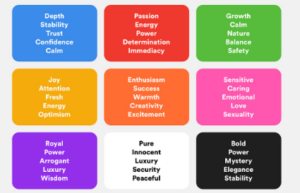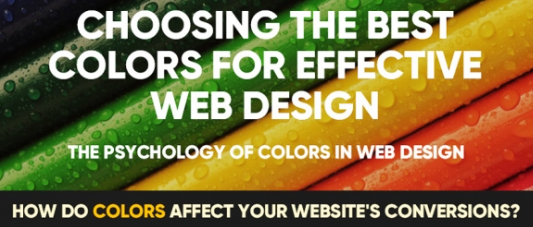In the digital age, websites have become an integral part of our daily lives. From shopping to socializing, we rely on websites for various purposes. Have you ever wondered why some websites make you feel calm and relaxed, while others make you feel excited and motivated? The answer lies in the psychology of colors. Colors play a crucial role in web design, affecting our emotions, perceptions, and actions. This article delves into the fascinating world of website color psychology and how it impacts user experience.
The Power of First Impressions
First impressions matter, and in the online world, colors are the first thing users notice when they visit a website. The choice of colors can instantly convey a brand’s identity and message. Whether it’s the soothing blue of Facebook or the vibrant red of Coca-Cola, colors set the tone for the user’s experience. Furthermore, they can elicit specific emotional responses.
Color Associations and Emotions
Colors are deeply connected to our emotions and experiences. Each color evokes a unique set of feelings and associations. For example, blue is often associated with trust, calmness, and reliability, which is why many financial and tech companies use it in their branding. On the other hand, red is associated with passion, energy, and urgency, making it a popular choice for sale banners and call-to-action buttons.
Cultural Influences on Color Perception
Color perceptions can vary significantly across different cultures. In some cultures, white represents purity and innocence, while in others, it symbolizes mourning and death. Therefore, it’s crucial for websites with a global audience to consider cultural nuances when selecting color schemes. A color that invokes trust in one culture may not have the same effect in another.
The Role of Contrast and Readability
Color psychology isn’t just about aesthetics; it also affects the usability of a website. High contrast between text and background colors enhances readability, ensuring that users can easily consume content. Dark text on a light background or vice versa is a standard choice for readability. However, designers can use contrasting colors strategically to draw attention to specific
Color Psychology in Call-to-Action Buttons
Call-to-action (CTA) buttons are critical for guiding users through a website’s desired actions, such as signing up, making a purchase, or subscribing to a newsletter. The color of these buttons can have a significant impact on conversion rates. Red and orange buttons often create a sense of urgency, prompting users to take immediate action, while green and blue buttons can convey a more relaxed and inviting tone.

Creating a Consistent Brand Identity
Consistency is key to effective branding. The colors used on a website should align with the overall brand identity and message. When users encounter consistent color schemes across a website and its other marketing materials, it reinforces brand recognition and trust. Therefore, designers must ensure that colors are chosen deliberately and used consistently throughout the site.
A/B Testing for Color Optimization
The psychology of colors is not one-size-fits-all. What works for one website may not work for another. To determine the most effective color scheme, web designers often rely on A/B testing. This involves creating two versions of a webpage with different color schemes and measuring which one performs better in terms of user engagement, conversions, and other key metrics.
The Impact of Color Combinations
While individual colors play a significant role in web design, the combinations of colors used are equally important. Color harmonies, such as complementary, analogous, or triadic color schemes, can create visual balance and appeal. On the other hand, clashing color combinations can be jarring and off-putting to users. Designers must carefully select and balance color palettes for a harmonious and aesthetically pleasing website.
Conclusion
In the realm of web design, the psychology of colors is a powerful tool that can shape user experiences, evoke emotions, and drive actions. From influencing first impressions to guiding users through the site, color choices should be deliberate and aligned with the website’s purpose and target audience. By understanding the psychological impact of colors, conducting A/B testing, and maintaining brand consistency, web designers can create websites that resonate with users on a deep emotional level, ultimately leading to greater engagement and success.

